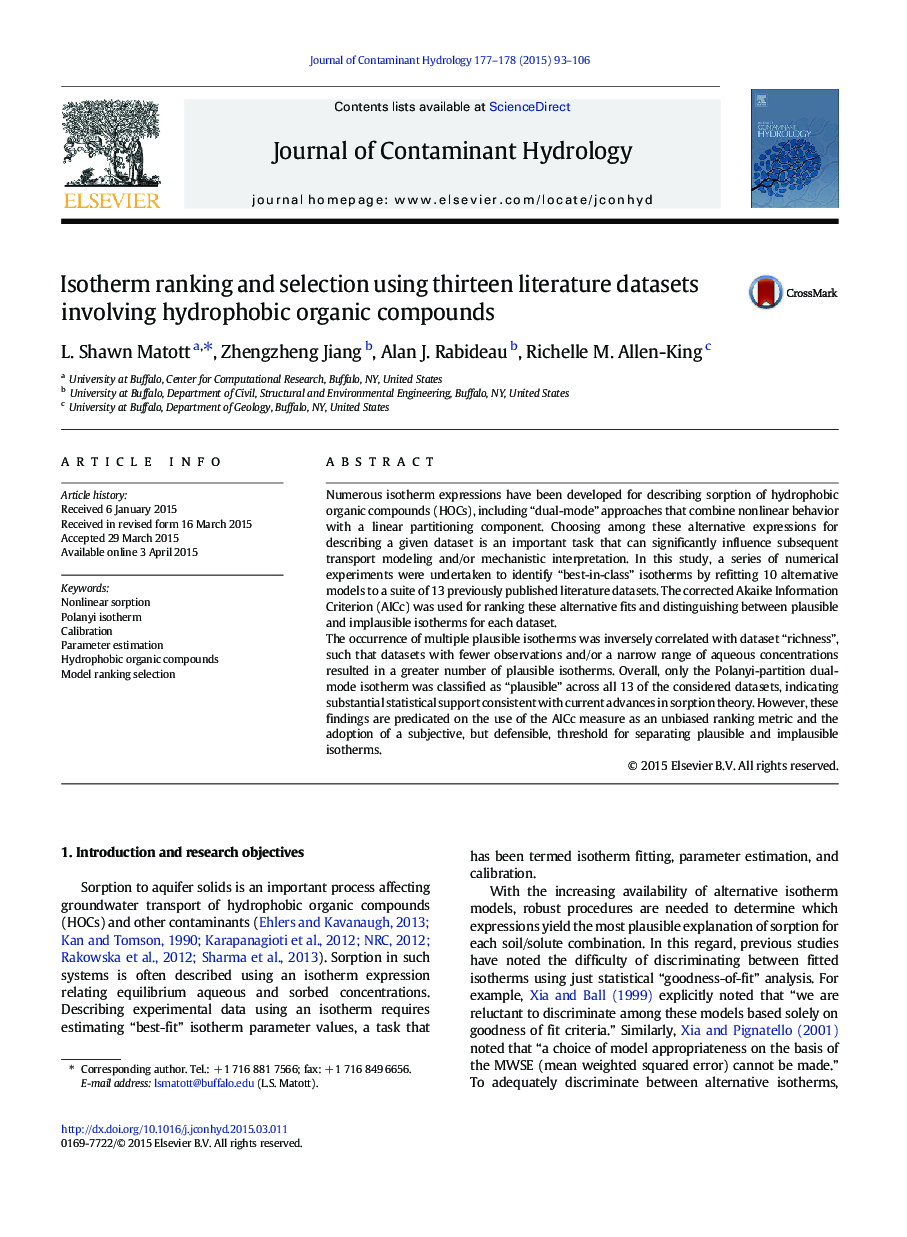| Article ID | Journal | Published Year | Pages | File Type |
|---|---|---|---|---|
| 4546440 | Journal of Contaminant Hydrology | 2015 | 14 Pages |
•Ten isotherms were fit to 13 datasets involving hydrophobic organic compounds.•Ranking and selection of fitted isotherms used information-theoretic criteria.•Polanyi-partitioning was the preferred expression for the selected datasets.•A “reality check” criterion helps identify and eliminate problematic isotherms.•Isotherm plausibility was more sensitive to dataset range than dataset size.
Numerous isotherm expressions have been developed for describing sorption of hydrophobic organic compounds (HOCs), including “dual-mode” approaches that combine nonlinear behavior with a linear partitioning component. Choosing among these alternative expressions for describing a given dataset is an important task that can significantly influence subsequent transport modeling and/or mechanistic interpretation. In this study, a series of numerical experiments were undertaken to identify “best-in-class” isotherms by refitting 10 alternative models to a suite of 13 previously published literature datasets. The corrected Akaike Information Criterion (AICc) was used for ranking these alternative fits and distinguishing between plausible and implausible isotherms for each dataset.The occurrence of multiple plausible isotherms was inversely correlated with dataset “richness”, such that datasets with fewer observations and/or a narrow range of aqueous concentrations resulted in a greater number of plausible isotherms. Overall, only the Polanyi-partition dual-mode isotherm was classified as “plausible” across all 13 of the considered datasets, indicating substantial statistical support consistent with current advances in sorption theory. However, these findings are predicated on the use of the AICc measure as an unbiased ranking metric and the adoption of a subjective, but defensible, threshold for separating plausible and implausible isotherms.
